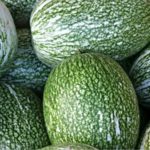The slender and elegant Dracaena surculosa punctulata, more commonly known as the Japanese Bamboo or Phat Du Bamboo, is a popular choice for homeowners looking to add a touch of sophistication and elegance to their space. In this article, we will guide you through the proper techniques for cultivating and caring for this beautiful plant.
1 What is Japanese Bamboo?
Origin and Significance of Japanese Bamboo
Native to the tropical regions of Central America, Southern Asia, and Africa, Japanese Bamboo is a species of bamboo with a scientific name of Dracaena surculosa punctulata. It is also known by the names Trúc Phất Dụ and Phất Dụ Trúc, reflecting its graceful and unique appearance.
 Introduction to Japanese Bamboo
Introduction to Japanese Bamboo
Characteristics and Classification of Japanese Bamboo
Japanese Bamboo typically grows in bushy clumps with multiple slender branches that reach skyward. Each plant can grow to a height of approximately 0.5 to 1 meter, with distinct nodes along its stem similar to those found on bamboo.
The leaves of Japanese Bamboo are long and narrow, shaped like a lanceolate with pointed tips, resembling bamboo leaves but with a softer and glossier texture. This plant boasts a variety of leaf colors and patterns, including solid green, spotted, or striped leaves.
 Characteristics of Japanese Bamboo
Characteristics of Japanese Bamboo
The flowers of Japanese Bamboo are a stunning display of pure white blossoms that grow in long clusters. These flowers have a unique structure, with the petals clustered at the tip and a long, protruding stalk. As the flowers fade, small, smooth, green fruits emerge, adding to the plant’s visual appeal.
 Japanese Bamboo Flowers
Japanese Bamboo Flowers
2 Benefits of Japanese Bamboo
Aside from its aesthetic value, Japanese Bamboo offers several benefits. It is known for its ability to enhance the decor of your home, adding a touch of sophistication and elegance. Moreover, this plant is an excellent air purifier, creating a comfortable and refreshing atmosphere in your living space.
 Benefits of Japanese Bamboo
Benefits of Japanese Bamboo
3 Feng Shui Significance of Japanese Bamboo
In the context of , Japanese Bamboo holds a special significance. Its tall and slender form represents the qualities of integrity and nobility, while its graceful branches add a touch of softness and elegance, reminiscent of a true gentleman. The plant is often cultivated in white porcelain pots to enhance its beauty and emphasize the refined taste of its owner.
Japanese Bamboo is also renowned for its resilience and vigor, thriving in a variety of climatic conditions. This attribute makes it a symbol of strength and determination, reflecting the human capacity to face and overcome life’s challenges.
 Feng Shui Significance of Japanese Bamboo
Feng Shui Significance of Japanese Bamboo
Additionally, the word “trúc” in Vietnamese sounds similar to “chúc,” which conveys a sense of blessing and good wishes. According to Chinese and some Vietnamese beliefs, planting Japanese Bamboo in your home’s garden is thought to bring good luck and ward off evil spirits, fostering a harmonious and joyful family life.
4 Japanese Bamboo Compatibility with Zodiac Signs and Ages
In the realm of Feng Shui, Japanese Bamboo is believed to be particularly auspicious for individuals with the Wood element in their zodiac signs. The vibrant green color of its leaves resonates with the Wood element, attracting positive energy and bringing good fortune to those who display it in their homes.
For individuals with Wood zodiac signs, it is recommended to place the plant in the south, east, or southeast directions to invite prosperity and ease in their endeavors. This simple act can help attract wealth and create a more harmonious living environment.
 Japanese Bamboo Compatibility with Zodiac Signs and Ages
Japanese Bamboo Compatibility with Zodiac Signs and Ages
5 Japanese Bamboo Cultivation and Care Techniques
Planting Japanese Bamboo at Home
To cultivate Japanese Bamboo, prepare a well-aerated and moist soil mixture, optionally enriched with coconut fiber or rice husk ash. Select one or two healthy branches free from pests and diseases and propagate them by rooting—firmly press the branches into the soil and water them daily until roots develop.
Once the roots have formed, transplant the young plant into a pot, positioning it in the center and firmly packing the soil around its base to ensure stability. Remember to water the plant immediately after potting.
 Japanese Bamboo Cultivation Techniques
Japanese Bamboo Cultivation Techniques
Caring for Japanese Bamboo
Japanese Bamboo thrives in shaded areas with gentle lighting, so avoid direct sunlight to prevent leaf scorching or damage. However, morning or evening sun exposure is beneficial for the plant’s growth.
When watering, maintain a moderate moisture level in the soil, as overwatering can lead to root rot. Additionally, provide the plant with liquid fertilizer or compost once a month to promote healthy growth. If you notice leaf drop or wilting, increase your care efforts to aid the plant’s recovery.
Powdery mildew is a common issue with this plant. If you spot this disease, use a cloth soaked in alcohol to wipe away the mildew. For pest problems, remove the infected plant and treat it with insecticides.
Reference:
 Japanese Bamboo Care Techniques
Japanese Bamboo Care Techniques
Notes on Japanese Bamboo Cultivation and Care
- When growing taller varieties of Japanese Bamboo, consider staking the plant to prevent breakage.
- You can also try hydroponic cultivation, changing the water once or twice a week.
- Water the plant in the early morning or evening, avoiding the heat of the midday sun, as this can be detrimental to its health.
6 Captivating Images of Japanese Bamboo
 Japanese Bamboo in Small Pots
Japanese Bamboo in Small Pots
 Tall Japanese Bamboo in Standing Pots
Tall Japanese Bamboo in Standing Pots
 Spotted Japanese Bamboo for Tabletops
Spotted Japanese Bamboo for Tabletops
 Versatile Placement Options for Japanese Bamboo
Versatile Placement Options for Japanese Bamboo
This concludes our comprehensive guide on cultivating and caring for Japanese Bamboo. We hope you found this information helpful and wish you success in growing this elegant plant.
2023 Lunar New Year Gift Ideas for Older Family and Friends
As 2021 approaches, families worldwide are gathering to celebrate the special bond between grandparents and their grandchildren. To show their love and admiration, these thoughtfully chosen gifts will bring a smile to the face of the elderly. Here, we have compiled a list of the 13 most meaningful Tet presents that can bring joy to our beloved grandparents.



































